Timing for better MPG
#26
LOSE THE TIRES. Sticky tires is the difference between 16mpg and 23mpg for me. There's no point to having ultra sticky tires on the street, you will never be legally allowed to use that much grip, so all you are doing is heat-cycling away your fun rubber and wasting fuel.
I got 295-30-19s out back with Pettit flares and the Gtc front bumper with feed type 2 rear wing. Aero wise, I'm f*cked!!!!! Lol!
Last edited by t-von; 06-09-15 at 03:44 PM.
#27
Moderator
iTrader: (3)
Join Date: Mar 2001
Location: https://www2.mazda.com/en/100th/
Posts: 30,802
Received 2,577 Likes
on
1,831 Posts
Barry's idea, as usual is brilliant. the key is its simplicity, fix the injector duty, to a percent, and then make changes.
there is a dyno, kind of in-between me and BlueTII, that is the kind where you can fix the RPM and vary load, and if you had enough time, i bet you would learn a lot by trying different gears, and tires and such
there is a dyno, kind of in-between me and BlueTII, that is the kind where you can fix the RPM and vary load, and if you had enough time, i bet you would learn a lot by trying different gears, and tires and such
#28
Old [Sch|F]ool
The hard thing about doing that around here is that there's no such thing as flat ground, it's down one hill and up the next, down one hill and up the next. So I had a 100 mile loop that I'd drive and top off at the start and end of the loop.
I did see 29mpg with the bridge port driving through Michigan where the glaciers scoured the land flat like God's own surface planer. In August when it was 90-odd degrees. Driving a constant 75ish MPH for hours. Basically the perfect storm for fuel economy. I get better economy the hotter the engine is...
I did see 29mpg with the bridge port driving through Michigan where the glaciers scoured the land flat like God's own surface planer. In August when it was 90-odd degrees. Driving a constant 75ish MPH for hours. Basically the perfect storm for fuel economy. I get better economy the hotter the engine is...
#29
Rotary Enthusiast
iTrader: (19)
Join Date: Apr 2002
Location: Colorado Springs, CO
Posts: 1,169
Likes: 0
Received 11 Likes
on
10 Posts
I just took the reading off my blitz spec S. I didn't really research much about it. the boost gauge reads -42 when getting pulled down the mountain with the engine engaged. When idling is reads -22 to -26 mm-hg. I mixed up the units, damn it.
#31
Moderator
iTrader: (3)
Join Date: Mar 2001
Location: https://www2.mazda.com/en/100th/
Posts: 30,802
Received 2,577 Likes
on
1,831 Posts
#32
"Elusive, not deceptive!”
The hard thing about doing that around here is that there's no such thing as flat ground, it's down one hill and up the next, down one hill and up the next. So I had a 100 mile loop that I'd drive and top off at the start and end of the loop.
I did see 29mpg with the bridge port driving through Michigan where the glaciers scoured the land flat like God's own surface planer. In August when it was 90-odd degrees. Driving a constant 75ish MPH for hours. Basically the perfect storm for fuel economy. I get better economy the hotter the engine is...
I did see 29mpg with the bridge port driving through Michigan where the glaciers scoured the land flat like God's own surface planer. In August when it was 90-odd degrees. Driving a constant 75ish MPH for hours. Basically the perfect storm for fuel economy. I get better economy the hotter the engine is...
...and Peejay that "Michigan where the glaciers scoured the land flat like God's own surface planer" was really man-made global cooling. I thinking the Democrats would love have figured a way to collect taxes on that too.
Barry
#33
Old [Sch|F]ool
It's a shame that science issues have been politicized by people with dark agendas to the detriment of everyone. I wonder how many climate change deniers have children.
400ppm and rising. The next couple decades will be very interesting.
400ppm and rising. The next couple decades will be very interesting.
#34
Red Pill Dealer
iTrader: (10)
Grow plants?
#35
"Elusive, not deceptive!”
Sorry to get off-topic but global warming has become a religion where you must believe.
400ppm in layman's terms is .038 of one percent of the air we breath... an inert gas that somehow can control the temperature of the whole world...
If it were really true we would have the "silver bullet" for stopping/reversing the next ice-age.
The info below make good "Cliff Notes" for understanding the big picture.
See if you can find on the charts where we are today.
Barry
ICE AGES – WHAT ARE THEY AND WHAT CAUSES THEM?
By Sandy Eldredge and Bob Biek
GeoSights - Glacier Landforms
What is an ice age? An ice age is a long interval of time (millions to tens of millions of years) when global temperatures are relatively cold and large areas of the Earth are covered by continental ice sheets and alpine glaciers. Within an ice age are multiple shorter-term periods of warmer temperatures when glaciers retreat (called interglacials or interglacial cycles) and colder temperatures when glaciers advance (called glacials or glacial cycles).
At least five major ice ages have occurred throughout Earth’s history: the earliest was over 2 billion years ago, and the most recent one began approximately 3 million years ago and continues today (yes, we live in an ice age!).
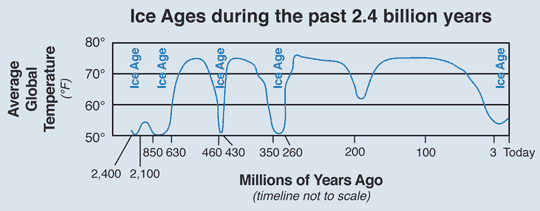
Currently, we are in a warm interglacial that began about 11,000 years ago. The last period of glaciation, which is often informally called the “Ice Age,” peaked about 20,000 years ago. At that time, the world was on average probably about 10°F (5°C) colder than today, and locally as much as 40°F (22°C) colder.
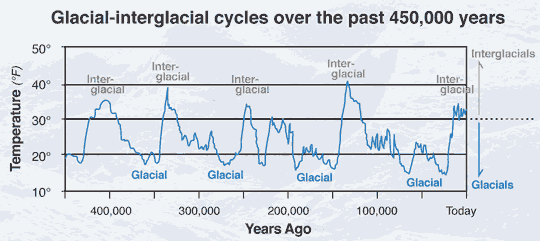
What causes an ice age and glacial-interglacial cycles? Many factors contribute to climate variations, including changes in ocean and atmosphere circulation patterns, varying concentrations of atmospheric carbon dioxide, and even volcanic eruptions. The following discusses key factors in (1) initiating ice ages and (2) the timing of glacial-interglacial cycles.
One significant trigger in initiating ice ages is the changing positions of Earth’s ever-moving continents, which affect ocean and atmospheric circulation patterns. When plate-tectonic movement causes continents to be arranged such that warm water flow from the equator to the poles is blocked or reduced, ice sheets may arise and set another ice age in motion.
Today’s ice age most likely began when the land bridge between North and South America (Isthmus of Panama) formed and ended the exchange of tropical water between the Atlantic and Pacific Oceans, significantly altering ocean currents.
How do we know about past ice ages? Scientists have reconstructed past ice ages by piecing together information derived from studying ice cores, deep sea sediments, fossils, and landforms.
Ice and sediment cores reveal an impressive detailed history of global climate. Cores are collected by driving long hollow tubes as much as 2 miles deep into glacial ice or ocean floor sediments. Ice cores provide annual and even seasonal climate records for up to hundreds of thousands of years, complementing the millions of years of climate records in ocean sediment cores.
Within just the past couple of decades, ice cores recovered from Earth’s two existing ice sheets, Greenland and Antarctica, have revealed the most detailed climate records yet.
Do ice ages come and go slowly or rapidly? Records show that ice ages typically develop slowly, whereas they end more abruptly. Glacials and interglacials within an ice age display this same trend.
On a shorter time scale, global temperatures fluctuate often and rapidly. Various records reveal numerous large, widespread, abrupt climate changes over the past 100,000 years. One of the more recent intriguing findings is the remarkable speed of these changes. Within the incredibly short time span (by geologic standards) of only a few decades or even a few years, global temperatures have fluctuated by as much as 15°F (8°C) or more.
For example, as Earth was emerging out of the last glacial cycle, the warming trend was interrupted 12,800 years ago when temperatures dropped dramatically in only several decades. A mere 1,300 years later, temperatures locally spiked as much as 20°F (11°C) within just several years. Sudden changes like this occurred at least 24 times during the past 100,000 years. In a relative sense, we are in a time of unusually stable temperatures today—how long will it last?
Glacials and interglacials occur in fairly regular repeated cycles. The timing is governed to a large degree by predictable cyclic changes in Earth’s orbit, which affect the amount of sunlight reaching different parts of Earth’s surface. The three orbital variations are: (1) changes in Earth’s orbit around the Sun (eccentricity), (2) shifts in the tilt of Earth’s axis (obliquity), and (3) the wobbling motion of Earth’s axis (precession).
400ppm in layman's terms is .038 of one percent of the air we breath... an inert gas that somehow can control the temperature of the whole world...
If it were really true we would have the "silver bullet" for stopping/reversing the next ice-age.
The info below make good "Cliff Notes" for understanding the big picture.
See if you can find on the charts where we are today.
Barry
ICE AGES – WHAT ARE THEY AND WHAT CAUSES THEM?
By Sandy Eldredge and Bob Biek
GeoSights - Glacier Landforms
What is an ice age? An ice age is a long interval of time (millions to tens of millions of years) when global temperatures are relatively cold and large areas of the Earth are covered by continental ice sheets and alpine glaciers. Within an ice age are multiple shorter-term periods of warmer temperatures when glaciers retreat (called interglacials or interglacial cycles) and colder temperatures when glaciers advance (called glacials or glacial cycles).
At least five major ice ages have occurred throughout Earth’s history: the earliest was over 2 billion years ago, and the most recent one began approximately 3 million years ago and continues today (yes, we live in an ice age!).

Currently, we are in a warm interglacial that began about 11,000 years ago. The last period of glaciation, which is often informally called the “Ice Age,” peaked about 20,000 years ago. At that time, the world was on average probably about 10°F (5°C) colder than today, and locally as much as 40°F (22°C) colder.

What causes an ice age and glacial-interglacial cycles? Many factors contribute to climate variations, including changes in ocean and atmosphere circulation patterns, varying concentrations of atmospheric carbon dioxide, and even volcanic eruptions. The following discusses key factors in (1) initiating ice ages and (2) the timing of glacial-interglacial cycles.
One significant trigger in initiating ice ages is the changing positions of Earth’s ever-moving continents, which affect ocean and atmospheric circulation patterns. When plate-tectonic movement causes continents to be arranged such that warm water flow from the equator to the poles is blocked or reduced, ice sheets may arise and set another ice age in motion.
Today’s ice age most likely began when the land bridge between North and South America (Isthmus of Panama) formed and ended the exchange of tropical water between the Atlantic and Pacific Oceans, significantly altering ocean currents.
How do we know about past ice ages? Scientists have reconstructed past ice ages by piecing together information derived from studying ice cores, deep sea sediments, fossils, and landforms.
Ice and sediment cores reveal an impressive detailed history of global climate. Cores are collected by driving long hollow tubes as much as 2 miles deep into glacial ice or ocean floor sediments. Ice cores provide annual and even seasonal climate records for up to hundreds of thousands of years, complementing the millions of years of climate records in ocean sediment cores.
Within just the past couple of decades, ice cores recovered from Earth’s two existing ice sheets, Greenland and Antarctica, have revealed the most detailed climate records yet.
Do ice ages come and go slowly or rapidly? Records show that ice ages typically develop slowly, whereas they end more abruptly. Glacials and interglacials within an ice age display this same trend.
On a shorter time scale, global temperatures fluctuate often and rapidly. Various records reveal numerous large, widespread, abrupt climate changes over the past 100,000 years. One of the more recent intriguing findings is the remarkable speed of these changes. Within the incredibly short time span (by geologic standards) of only a few decades or even a few years, global temperatures have fluctuated by as much as 15°F (8°C) or more.
For example, as Earth was emerging out of the last glacial cycle, the warming trend was interrupted 12,800 years ago when temperatures dropped dramatically in only several decades. A mere 1,300 years later, temperatures locally spiked as much as 20°F (11°C) within just several years. Sudden changes like this occurred at least 24 times during the past 100,000 years. In a relative sense, we are in a time of unusually stable temperatures today—how long will it last?
Glacials and interglacials occur in fairly regular repeated cycles. The timing is governed to a large degree by predictable cyclic changes in Earth’s orbit, which affect the amount of sunlight reaching different parts of Earth’s surface. The three orbital variations are: (1) changes in Earth’s orbit around the Sun (eccentricity), (2) shifts in the tilt of Earth’s axis (obliquity), and (3) the wobbling motion of Earth’s axis (precession).
#36
Old [Sch|F]ool
Well, here's the thing. We're seeing a significant rise in oceanic temps, which sure as hell is affecting many underlying systems, like ocean acidification affecting the water's ecosystems and the temp rise farking up the weather patterns, which kinda sucks for us since we ted to grow most of our food in the fertile areas most greatly being farked up, and the only people who disagree with the science are either the people who could lose financially from people waking up, or the people who would rather not face the difficult decisions ahead and would rather put them off until it's too late to do anything.
That's not "The thing". The thing is that reality doesn't care if you believe in it or not, it just is.
Climate change deniers are like people who want to believe that they can make 400whp on a Turbo Ii with a stock turbo and injectors. They know because a guy told them so, and that confirms their bias towards the easy route. The people who tell you different are just shills for the people selling turbos and intercoolers and fuel system parts. Follow the money!!
So like I said, no matter what you "believe" or not, reality is reality, and the next few decades will be interesting to watch. And whether or not you believe in the science, the things that would help minimize our contributions would also better our quality of life both as a country and society but also individually. Such as the subject of this thread, better fuel economy. Better fuel economy comes from more efficiently using the engine's fuel and by more efficiently moving the car down the road. The end result of course is less fuel used per mile, which you can take to mean more money saved or more time spent enjoying the car for the same amount of money. Either way, it's a good thing.
I mean, I LIKE being able to drive home from a rallycross without stopping (160-250mi), and still have enough fuel in the tank to go back and forth to work for most/all of the next week.
That's not "The thing". The thing is that reality doesn't care if you believe in it or not, it just is.
Climate change deniers are like people who want to believe that they can make 400whp on a Turbo Ii with a stock turbo and injectors. They know because a guy told them so, and that confirms their bias towards the easy route. The people who tell you different are just shills for the people selling turbos and intercoolers and fuel system parts. Follow the money!!
So like I said, no matter what you "believe" or not, reality is reality, and the next few decades will be interesting to watch. And whether or not you believe in the science, the things that would help minimize our contributions would also better our quality of life both as a country and society but also individually. Such as the subject of this thread, better fuel economy. Better fuel economy comes from more efficiently using the engine's fuel and by more efficiently moving the car down the road. The end result of course is less fuel used per mile, which you can take to mean more money saved or more time spent enjoying the car for the same amount of money. Either way, it's a good thing.
I mean, I LIKE being able to drive home from a rallycross without stopping (160-250mi), and still have enough fuel in the tank to go back and forth to work for most/all of the next week.
Last edited by peejay; 06-12-15 at 04:55 PM.
#37
"Elusive, not deceptive!”
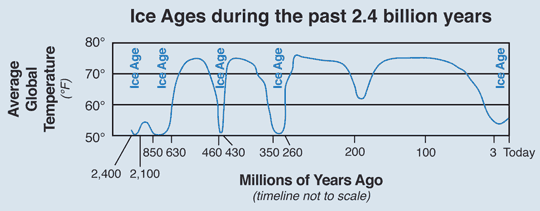
I agree with you that we should be good stewards of the earth...
But understand we are not in control of it.
It has been in balance for approximately 4 billion years without our help...
Notice in this chart that man's entire existence is included in the last 1/16" of the line
to the right (and earth's total age would be 16 more charts end to end.)
When I follow the money I keep hearing that we must buy "carbon credits".
And one more point about this so-called terrible substance.
Plants, vegetables, and fruit are all composed of just two substances...CO2 and water.
All the trees/wood that we use ...... CO2 and water.
If there is an excess of CO2 they all just grow faster.... balance.
Evidence is from the past... the future is guesswork.
Here are multiple weather computer models trying to predict where a hurricane goes...
and this is just for tomorrow and the next day!
They disagree with each other and in this case all were wrong!
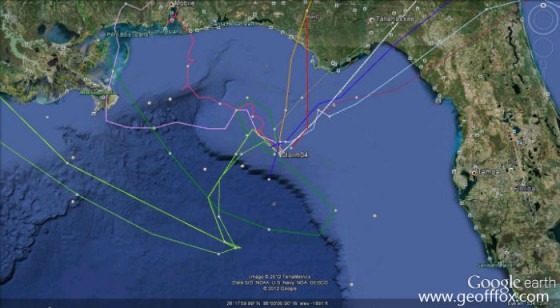
#38
Moderator
iTrader: (3)
Join Date: Mar 2001
Location: https://www2.mazda.com/en/100th/
Posts: 30,802
Received 2,577 Likes
on
1,831 Posts
out west our governor moonbeam (look it up), basically told us we are out of water, in a rainstorm. the water thing is fairly serious, as apparently we grow something like 20% of the food here. the farmers have made up the water deficit by drilling wells, but they've sucked up so much water the land is falling.
our air is a solid mass of brown crap (if you want a good visual, i was going to suggest US vs UK top gear, same camera, it looks different because the air in LA is full of "stuff". example 2, watch the A team introduction, there is a long shot of downtown LA, and you can clearly see brown cloud around it.).
the bigger problem is that instead of doing something about these problems, our governing bodies have a tin ear. for instance, they solved the street parking problem by getting rid of street parking.
so basically we're doomed, although there is a bridge for sale, it was used by Mark Zuckerberg, so its worth more than your bridge
our air is a solid mass of brown crap (if you want a good visual, i was going to suggest US vs UK top gear, same camera, it looks different because the air in LA is full of "stuff". example 2, watch the A team introduction, there is a long shot of downtown LA, and you can clearly see brown cloud around it.).
the bigger problem is that instead of doing something about these problems, our governing bodies have a tin ear. for instance, they solved the street parking problem by getting rid of street parking.
so basically we're doomed, although there is a bridge for sale, it was used by Mark Zuckerberg, so its worth more than your bridge

#39
Old [Sch|F]ool
The problem with "rainstorm" is that water mostly runs right out to sea or evaporates and goes somewhere else. It takes a lot of time to refill an aquifer...
#40
"Elusive, not deceptive!”
Moonbeam's dad built reservoirs... they are out of favor now.
If California wasn't so against pipelines we could send them water... The Mississippi flows on average 590,000 cu ft/sec and it just empties into the Gulf...
Back on topic your best fuel economy would be to set up your ignition timing so as to put your peak pressure at 45* ATDC
The cruise method that I described is just a simplified (and cheap) way to do it.
Barry
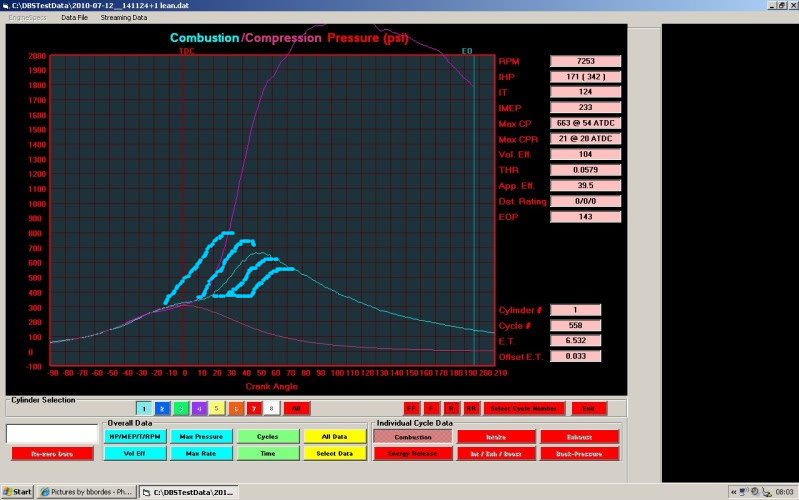
If California wasn't so against pipelines we could send them water... The Mississippi flows on average 590,000 cu ft/sec and it just empties into the Gulf...
Back on topic your best fuel economy would be to set up your ignition timing so as to put your peak pressure at 45* ATDC
The cruise method that I described is just a simplified (and cheap) way to do it.
Barry

Thread
Thread Starter
Forum
Replies
Last Post



